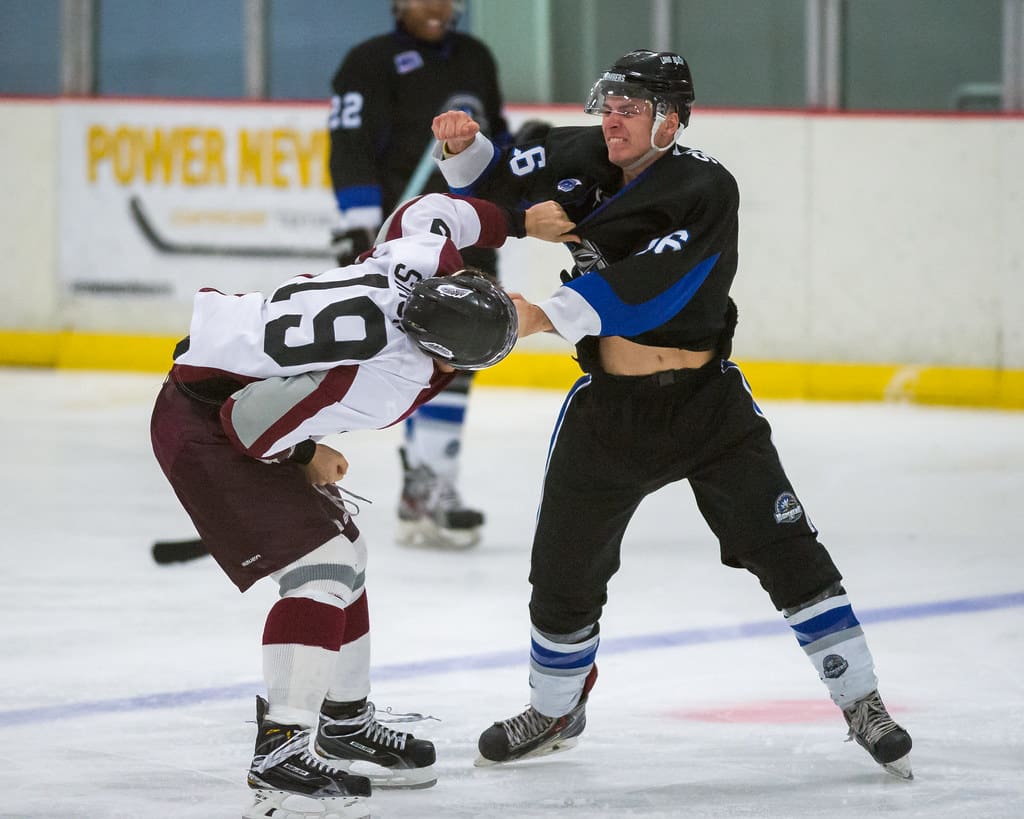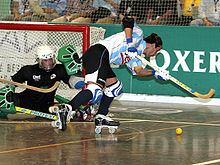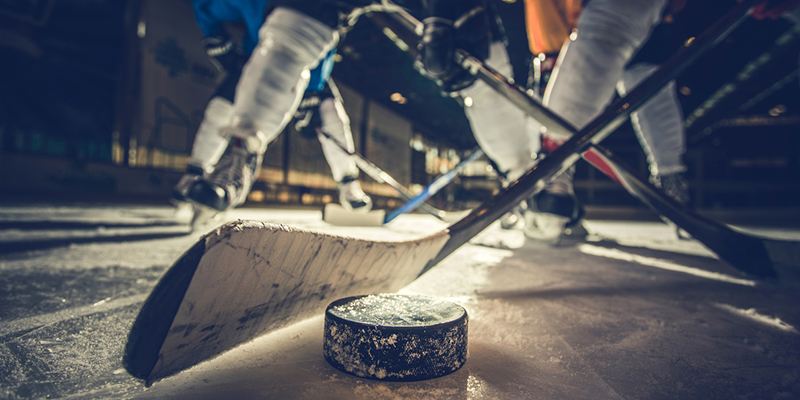What is the Crease in Hockey – A Comprehensive Guide
Hockey is a sport of speed, skill, and power. Skaters race up and down the ice, stickhandling, passing, and shooting the puck. The goaltender, clad in padding and a mask, tries to stop the opposing team from scoring. But did you know about the crease? it is an essential part of the game that impacts how the goalie plays and how skaters approach the net. In this section, we will discuss the purpose of the crease.
what is the crease?
The crease is a semi-circle that extends out from the goalpost and is marked in blue. It’s about 8 feet (2.4 meters) in radius and serves as an area where only the goaltender is permitted to stand. Any opposing player who interferes with the goalie while they are in the crease area receives a two-minute penalty for goaltender interference.
how does the crease impact the game?
the crease plays an integral role in the game by protecting the goalkeeper and establishing clear boundaries. The goaltender needs to be able to move freely in their area without being checked or knocked down by opposing players. The crease prevents this from happening and ensures that the goalie can defend their net effectively. Moreover, the crease is also used to determine goals, which cannot be scored if an attacking player enters the crease and touches the puck before the goal is scored.
how do players use the crease during a game?
while only the goalie is permitted to be in the crease, players use it in a few different ways, including:
- as a landmark to gauge distance from the net when shooting.
- as a reference point to position themselves for rebounds or deflections.
- as a place to screen the opposing goalie or block their line of sight.
- as a location to await a pass from a teammate and quickly redirect the puck into the net.
what are the benefits of understanding the crease’s purpose?
understanding the crease’s purpose will help you appreciate how the game works and how players and referees interact with each other. It enables you to play the game better, too, especially if you’re a skater looking to score goals. By knowing the rules surrounding the crease, you can position yourself better and avoid penalties for goalie interference. Understanding the crease is also valuable for goalies because it allows them to protect their net better and work more efficiently with defensemen. the crease plays an essential role in hockey, and its purpose is to protect the goalie, ensure players follow the rules, and help skaters and goalies out on the ice. Understanding how it works can enhance your experience watching and playing the game.
The History of the Crease in Hockey
The crease is an essential element of ice hockey, and its existence has played a significant role in shaping the game as we know it today. From its origins to modern-day regulations, the crease has had a substantial impact on the game of hockey. In this blog post, we will delve into the history of the crease in hockey, exploring how it has evolved over time and examining the regulations surrounding it.
the origins of the crease
the crease was first introduced in 1945 by the national hockey league (nhl) to prevent goalies from physically blocking the entire goal mouth. Originally, it was a trapezoid shape painted on the ice behind the net, with its longest side against the boards. Over time, the shape of the crease has changed, with the trapezoid being altered to a semi-circle in 1955. Today, the crease is a semi-circle with a radius of six feet around the goal, and its purpose is to provide a clear area in front of the net that only the goalie can access.
how the crease has evolved over time
the evolution of the crease in hockey has been fascinating. Early on, the crease was seen as a physical obstacle that goalies had to contend with, but today, it is a vital component of the game. The crease has evolved from a trapezoid to a semi-circle and has become bigger to provide more space for the goaltender. Moreover, the shape of the crease has been modified, forcing goaltenders to adjust to the new dimensions constantly.
changes in the rules and regulations surrounding the crease
there have been several changes in the regulations surrounding the crease. In 1999, Daniel Alfredsson’s goal in a playoff game was disallowed because he was in the crease when he scored, sparking a fierce debate over the rule. The NHL responded by modifying the rule that no player could be in the crease while a goal was being scored, provided they did not interfere with the goaltender’s ability to play. Another significant change came in 2005 when the NHL eliminated the “allowance rule”, which allowed referees to award goals even if a player was in the crease.
the impact of the crease on the game of hockey today
the crease has had an immense impact on the game of hockey today. It has contributed to the game strategy, with teams devising tactics to get through the defense and score goals. The crease has also helped in ensuring fair play and keeping the game competitive. Furthermore, it has created an iconic image of the goaltender fiercely guarding his area, ready to make a save at any moment. the crease is one of hockey’s most essential elements, playing a significant role in the game’s development over the years. Its origin, evolution, and impact are a testament to the importance of the crease in hockey and why it continues to be an integral part of the game.
The Rules of the Crease
Hockey is a dynamic sport, and it involves a lot of rules and regulations to make the game fair and safe. One of the most important and unique rules in hockey is the crease. The crease is a semi-circular area around the goal, and it has specific rules associated with it. In this section, we will delve into the rules of the crease, including its restrictions, the role of the goaltender, how referees monitor it during a game, and the penalties for violating crease rules.
what are the restrictions within the crease?
the crease serves as a protected area for the goaltender, and there are specific restrictions associated with it. The restrictions within the crease are as follows:
- no opposing player is allowed in the goaltender’s crease unless they have possession of the puck.
- the goaltender is not allowed to leave the crease while playing the puck.
- if a goal is scored while an opposing player is in the crease, it will be disallowed, unless they were pushed in by a defending player or if the goaltender initiates contact with them.

what is the goaltender’s role in the crease?
the goaltender has a crucial role within the crease, as it serves as their protected area. The goaltender’s role in the crease is as follows:
- the goaltender must remain in the crease as much as possible during play.
- the goaltender is allowed to use their stick to stop or pass the puck, but only within the limits of the crease.
- the goaltender is expected to protect the net and prevent the opposing team from scoring goals.
how do referees monitor the crease during a game?
referees play an essential role in monitoring the crease during a game. They use a variety of methods to ensure that the crease rules are followed, including:
- monitoring the positioning of players in and around the crease during gameplay.
- utilizing instant replay to review any questionable goals that may have been scored while an opposing player was in the crease.
- communicating with each other to ensure that all potential infractions are adequately caught and penalized.
what are the penalties for violating crease rules?
if a player violates the crease rules, they will be penalized, and the opposing team will receive a power play. The penalties for violating crease rules are as follows:
- if an opposing player is in the crease without possession of the puck, they will receive a minor penalty for interference.
- if a goal is scored while an opposing player is in the crease, and they did not have possession of the puck, the goal will be disallowed.
- if a defending player intentionally pushes an opposing player into the goaltender, they will receive a minor penalty for goaltender interference.
The Crease Role in Scoring
Hockey is a thrilling game that requires players to utilize every inch of the rink to score goals and ultimately win the game. The crease is an integral part of the playing field that separates the goalie’s area from the rest of the rink. As a result, its key role in scoring cannot be overlooked. In this blog post, we’ll examine why the crease is essential to scoring goals, how players use it to score, and some impressive crease goals in hockey history.
why is the crease important for scoring?
the crease is the only area on the rink that’s exclusively reserved for the goalie. For this reason, players must adhere to certain rules when they enter this area. The following are some of the reasons why the crease is critical to scoring goals in hockey: * it prevents players from interfering with the goalie’s play, making it easier for them to defend their goalposts. * the crease provides goalies with a clear view of oncoming shots, allowing them to make the necessary saves. * it makes it difficult for opposing players to score from close range, making goals scored from the crease extremely valuable.
how do players use the crease to score goals?
although the crease is the goalie’s domain, players can still use it to their advantage when scoring goals. Here are some common strategies: * players can position themselves in the crease to “screen” the goalie, making it difficult for them to see the puck. * they can also “deflect” the puck into the net by redirecting an incoming shot while in the crease. * players can create confusion in the crease, making it difficult for the goalie to determine the location of the puck. * Finally, they can “bang in” rebounds from the crease when the puck bounces off the goalie or the goalposts.
what are some examples of impressive crease goals in hockey history?
throughout the years, several memorable crease goals have been recorded in hockey history. Here are three of the most notable: In game 4 of the 1970 Stanley Cup finals, bobby orr scored an overtime goal, diving into the crease and tapping in the puck for his Bruins’ victory. In 2019, Boston Bruins player, sean kuraly, scored a game-winning goal against the new york islanders with a fantastic shot from the crease while on his knees.
During the 1996 western conference finals, joe murphy of the detroit red wings scored a sliding goal with one hand while in the crease, earning him the nickname “one-handed Joe.” the crease plays a crucial role in the game of hockey, serving as a critical area for both goalies and players. Knowing how to use the crease to their advantage can be the difference between a win or a loss for any team, making it an important aspect of any hockey game.
The Crease and Video Review
The crease is a crucial part of the game of hockey, where goalies and defenders try to guard it against opposing offenses. With the advancement of technology, video reviews have become an integral part of the game, particularly in situations where the crease is involved. In this blog post, we will explore how video reviews impact the crease, the rules and regulations surrounding video reviews in the crease, and some examples of video reviews in the crease.
how does video review impact the crease?
video review has greatly impacted the crease in hockey by aiding referees in making the correct call. Here’s how it impacts the crease:
- video review allows officials to review a play to see if there was any interference in the crease by opposing players. If there was any interference, the goal may be disallowed.
- video review can also help determine whether a goal was scored legally or if the puck crossed the goal line after being kicked in.
- the use of video review ensures that games are played fairly and that decisions are made accurately.
what are the rules and regulations surrounding video review in the Crease?
rules and regulations are necessary to ensure that video review is used correctly and fairly. Here are the regulations surrounding video review in the crease:
- video review can only be used in specific situations, including determining whether a goal has been scored, reviewing offside plays, and reviewing goalie interference.
- the decision to review a play is made by the officials on the ice or in the NHL situation room in Toronto.
- the decision to overturn or uphold a call is based on video evidence and must be indisputable. If the evidence is unclear, the original call on the ice stands.
what are some examples of video reviews in the crease?
video reviews have been used several times in the crease, with notable examples including:
- in the 2018-2019 nhl season, san jose sharks’ forward, logan couture, had a goal disallowed after a video review showed that he made contact with the goalie while in the crease.
- in the 2019-2020 nhl season, the St. Louis Blues scored a goal against the chicago blackhawks that was reviewed and allowed after determining that there was no goaltender interference.
- in the 2020 Stanley Cup playoffs, a goal by Kevin Hayes of the philadelphia flyers was disallowed after a video review showed that he was offside prior to the goal.
video review has significantly impacted the crease in hockey by ensuring fair play and accurate decisions. By following strict rules and regulations, video review has been able to make the game of hockey better and more enjoyable to watch.
FULL RECOVERIES ACROSS THE CREASE – GETTING UP! | How to Hockey Goalie Tips & Drills
Conclusion
The crease in hockey is a vital area around the net. It is an area that only the goaltenders are allowed to enter. Players, other than the goalie, may not impede the goalie while in the crease, or a penalty may be called. It is a crucial part of the game to keep the crease clear and protect the goaltender. The crease is also an important aspect of reviewing goals as any player in the crease during a goal may diminish the other team’s chances of stopping a good shot. All in all, the crease is a small but important part of any hockey game, and players must understand the rules surrounding it to play effectively and efficiently.
Frequently Asked Questions on What is the Crease in Hockey
1. What is the purpose of the crease in hockey?
The purpose of the crease in hockey is to mark the area in front of the goal where only the goaltender is allowed to be. The crease is a semi-circular area that extends out from the goalposts and is painted on the ice. Its primary function is to establish a boundary for the goaltender and protect them from interference by opposing players.
2. What is the size and shape of the crease in hockey?
The crease in hockey is semicircular in shape, with a radius of 6 feet from the goalpost. The crease extends 8 feet out from the goal line and is painted blue.
3. Can players other than the goalie enter the crease in hockey?
Players on the opposing team are not allowed to enter the crease, as it is an area designated solely for the goalie. However, if a player on the attacking team enters the crease by accident or is pushed in by an opposing player, the play is usually allowed to continue, as long as the player does not interfere with the goalie.



